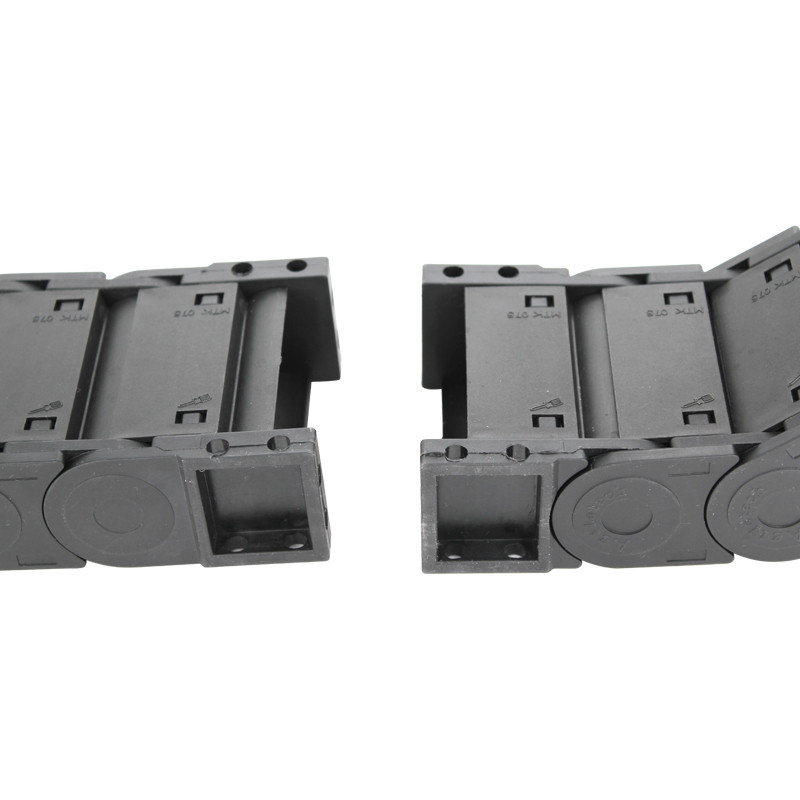drag chain use
Understanding the Use of Drag Chains in Various Applications
Drag chains, also known as cable carriers or draglink chains, are essential components in modern engineering and machinery that facilitate the organized and efficient management of cables and hoses. Their primary purpose is to protect these elements from wear and tear while allowing for their movement in a controlled manner. With applications spanning various industries, drag chains provide an effective solution to common problems associated with cable management in dynamic environments.
What Are Drag Chains?
Drag chains are typically made from robust materials such as plastic, steel, or aluminum and come in a wide range of sizes and designs suitable for various applications. They consist of interconnected links that create a flexible channel for cables, hoses, or wires. As the machinery operates, the drag chain travels along a predetermined path, while the cables and hoses remain secure and well-managed within the chain. This design not only prevents tangling and damage but also ensures that essential connections maintain their integrity and performance.
Applications of Drag Chains
1. Industrial Machinery In manufacturing and production facilities, drag chains are extensively utilized in machines that involve repeated movements, such as robotic arms, CNC machines, and conveyor systems. They keep power and signal cables neatly organized, allowing machines to operate smoothly without interference from loose wires.
2. Automated Systems Automated guided vehicles (AGVs) and other robotic systems require flexible cable management systems that can support their dynamic movements. Drag chains enable the safe routing of cables in these systems, preventing disruptions in power supply and communication between components.
3. Energy Generation In renewable energy sectors, such as wind turbines and solar power installations, drag chains play a critical role in managing cables that connect different electrical systems. They protect cables from environmental elements and mechanical wear, ensuring reliability and longevity in energy production.
4. Marine Applications In marine environments, where space is often limited and conditions can be harsh, drag chains are invaluable. They secure cables and hoses on vessels and submarines, safeguarding them against corrosion and abrasion caused by saltwater exposure.
drag chain use

5. Aerospace The aerospace industry requires stringent safety and reliability standards. Drag chains are utilized to manage wiring and tubing in aircraft, ensuring that all systems function correctly while remaining protected from vibration, temperature fluctuations, and movement during flight.
Advantages of Using Drag Chains
1. Protection Drag chains shield cables and hoses from mechanical damage and environmental factors, enhancing the longevity of these components.
2. Organization By providing a defined path for cables, drag chains eliminate clutter and reduce the risk of accidents caused by loose wires.
3. Enhanced Mobility They allow for smooth movement of cables without stressing the connections, thus maintaining a reliable flow of power and information.
4. Reduced Maintenance With cables neatly organized and protected, maintenance becomes more efficient, and downtime is minimized. This efficiency translates to cost savings and improved operational productivity.
5. Versatility Drag chains come in various sizes and shapes, making them adaptable for different applications, ensuring that industries ranging from automotive to pharmaceuticals can find a suitable solution for their cable management needs.
Conclusion
As technology continues to advance, the importance of effective cable management becomes increasingly clear. Drag chains offer a practical solution to many challenges associated with the mobility and safety of cables and hoses in various applications. By employing drag chains, industries can boost efficiency, enhance safety, and extend the life of their equipment. As manufacturing processes evolve, the role of drag chains remains vital, securing the connections that keep industrial and automated systems running smoothly. In a world increasingly reliant on technology, ensuring that these connections are managed effectively is paramount for success.








